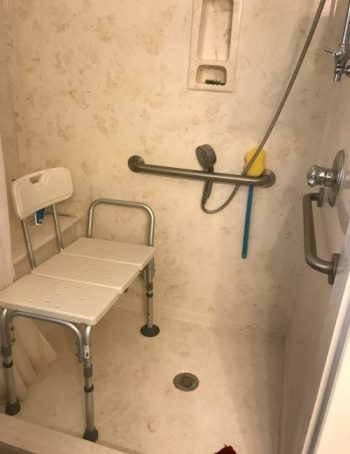The news of President Biden’s fall while playing with his dog Major was all over the news shortly after the election. Most of us probably heard comments about how our “mature” president-elect should be more cautious given his advanced age. But falls happen all the time to people of all ages and will continue to happen as long as gravity exists. Fortunately, we can limit the injuries and number of falls by using fall prevention strategies.
It’s true that the older you are, the more the frequency of falls seem to increase, and the more havoc they seem to wreak on your life and health. Before Covid-19, falls ranked way up in the leading causes of death for folks over 65, in fact. But we can always decrease the risk of falls, and we’re never too young to begin addressing the risks.
A coworker in the healthcare agency where I work shared a story about her 16-month-old son who was recovering from a broken leg, an injury he acquired from a playground accident. Her little boy had been sitting between her legs as they flew down the slide. Her son’s sneaker caught the edge of the slide, breaking his leg. The little guy was just getting the hang of walking and starting to run when the injury occurred.
The doctor at the emergency room told her this was a very common injury. She was frustrated and outraged she had not been warned of such a common injury before it resulted in her son’s injury. She would have done anything to prevent her son’s suffering and resultant developmental delays due to injury if only she had known the risk.
I feel the same frustration when I hear about mature adults’ injuries from falls. So many injuries are unnecessary, and could easily be prevented with the elimination of several common fall risks.
Sadly, many older adults have the mistaken belief that we are too young, strong, or careful to fall. This notion does not serve us given the fact that balance begins to decline at age 50. According to studies, we can expect to lose 3-8% of our muscle mass per decade after the age of 30. And that decline in muscle mass doubles after age 60! While these changes occur in our bodies as we age, the power of gravity stays the same. To prevent falls, we have to be aware of the risks and use effective strategies to prevent them.
Fall Prevention Strategies for Safety at Home
Get some exercise!
Of course, you’ll want to check with your healthcare provider before you begin an exercise program, but resistance exercise will build your strength for balance.
- Try sitting and standing multiple times from a chair of the proper height for you. This is a great exercise for strengthening your lower body and your core while it improves balance.
- When you’re lying in bed, do hip bridges: While lying flat, bend your knees and put your feet flat on the bed. Raise your hips toward the ceiling and hold for 5 seconds, lower hips back to the bed, and repeat.
- When you’re standing at the sink brushing your teeth or washing dishes, raise your heels, shifting your weight to the balls of your feet, repeat multiple times.
You can do these exercises throughout the day as you move through the normal activities of the day, or plan to perform several sets at specific times during the day, say before meals. The more you incorporate exercise into your daily routine, the stronger and more balanced you’ll become.
Clear the floors!
Rugs, newspapers, magazines, crafting items, lap blankets, walking canes, pet toys, cleaning equipment, and clothing can accumulate in our living spaces and often find their way into the pathways of the home and on the floor of closets and bathrooms. This type of clutter presents serious fall risks. There is simply no substitute for putting things away. If you don’t have a space for them, make space or get rid of them. Your safety is more important than your things.
Nose and toes aligned!
The most common fall I know is when people change directions, such as turning around when you forget something in the other room. When the head and shoulders turn before the feet, balance becomes unstable. This, like all falls, happens fast, before you have a chance to figure out what went wrong. If you need to make a 180-degree change of direction, just come to a stop and turn around with control, keeping your feet and head pointing the same direction as you turn yourself around. When you are rounding a corner, stay in control of your balance with the same principle. If you can become aware of these types of movements and keep your nose and toes aligned, you’ll eliminate a lot of falls in your future.
Invest in equipment for fall prevention!
Grab bars can work in the shower and by the toilets, but they can also be a benefit in closets, pantries, utility rooms, garages, bedrooms, and hallways. Motion-sensitive lighting can help light pathways to the bathroom or down steps after dark. Tub benches and raised toilet seats can improve safety in the bathroom. Ramps at the garage door and entry doors can decrease falls. Reachers can help reach items overhead or at floor level to prevent loss of balance. Investments in the right equipment can pay off in better health and fewer doctor bills.
I don’t know how many of these fall prevention strategies Joe Biden has incorporated into his lifestyle, but being aware of fall risks, planning, and strategizing to prevent falls will keep us all safer, happier, and healthier. If you have ideas about fall prevention and improving safety in the home, please share!

